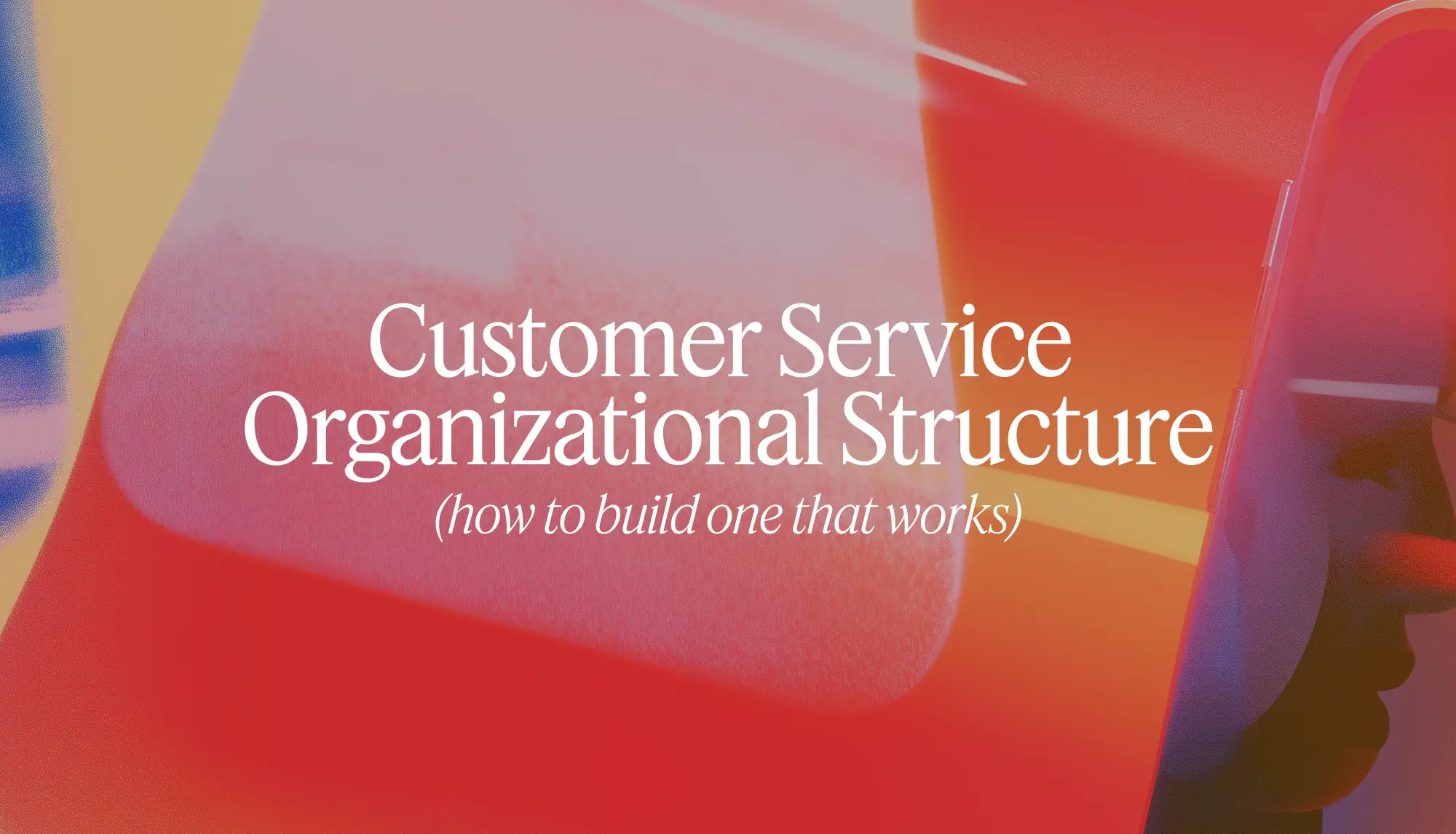
Written by
Nouran Smogluk
How to Get Buy-In From Your Customer Support Team for AI
August 6, 2024
8
min read
AI solutions in customer support are transformative.
They can provide fast and accurate responses to customers, reduce wait times, and enable personalized interactions. They can also help agents become extremely efficient, lower their time to competency, and free up valuable time so they can focus on more complex tasks that need to be handled by a person.
These are massive benefits for your business–and can be great for your team, too. However, this requires adapting to a lot of change quickly, which will often be intimidating for your CS team.
Not only will they have to learn the new technology, but they might also perceive some risk to their job security.
Alleviating that fear is paramount to the success of implementing AI.
Why getting buy-in from your team is essential
Your CS team consists of experts who interact with customers daily.
They have a deep knowledge of your product, know exactly what customers struggle with, and will have the best picture of the types of cases that can be handled by AI. Getting their buy-in will mean:
Higher morale. Working with an AI solution–especially now while the technology is new and booming–genuinely creates opportunities for your CS team and can have a massive impact on their future career. AI can automate any repetitive tasks that can be draining while allowing team members to develop expertise in AI technology.
Increased adoption and active engagement. When the team is on board, they’re more likely to embrace it and integrate it into their workflows. They’ll take the time to explore the tool’s full capabilities and provide valuable feedback. The more engaged they are, the easier it will be to implement AI successfully.
Improved customer experience. Because the team has the best knowledge of customer pain points, they’ll also know when and where AI can have the largest impact. Their buy-in also means that they’ll think about how AI can help them while talking to customers, so they’ll see new opportunities to improve the customer experience they’d otherwise miss.
Faster implementation. Training an AI solution requires time. Many companies start with one or two people taking on that responsibility but to scale it effectively (and quickly), you’ll likely need involvement from everyone in the team. They can share the training load, speeding up the process and ensuring it learns from diverse interactions and scenarios.
Seven ways to get buy-in from your CS team
The great news is that 80% of employees say AI has already helped improve the quality of their work. When employees engage with AI solutions and use them regularly, they often see an impact very quickly.
The only challenge is in getting them over that hurdle to give it a try first.
Here are seven ways to approach implementing an AI solution with your team to ensure that happens.
1. Involve the team early
AI adoption has rapidly increased over the last year and will continue to do so.
If you aren’t already working with an AI solution, your team probably won’t be surprised to hear that you want to.
The main thing to remember is that involving them early and talking about that transparently will affect their reaction. In practice, that means:
Including them in the decision-making process. Say you want to implement a customer-facing AI tool and a copilot one. Show them a few different examples of each and get their input about what they’d like to work with and why. If you only announce it to the team when the decision has already been made, they’ll feel blindsided.
Involve the most senior members first. If you think there’ll be some pushback, senior team members can help align your message and make it easier to get buy-in from other members because of the way they influence their peers.
Run a pilot program with volunteers. Pilot programs are a great way to demystify the impact of a change. You can treat them as an experiment, define an end date, agree on success criteria, and evaluate when you’re done. Show your team that the commitment to a particular solution isn’t so absolute that there’s no backing out–that’ll make them feel like their feedback matters, and they can contribute to the solution.
Create a sense of ownership and collaboration. Rather than taking full ownership of and managing the project yourself, see if there are opportunities to delegate or involve everyone equally. Change is much easier to manage when you’re part of it, so make your team part of it.
2. Communicate your vision
Presenting your strategy and vision is the best opportunity to alleviate those job security fears.
Realistically, AI will replace some parts of your customer support–that’s the whole point. But the best customer experiences are crafted by combining AI and human support.
Your vision should answer:
How does AI fit into the broader company strategy?
What opportunities will AI create for your team?
How do you expect it to impact their jobs?
Some businesses might struggle to adequately staff for peaks, while others might want to provide 24/7 support but can’t hire worldwide. The specific challenges you’re facing change the impact AI solutions will have on your team.
In an ideal scenario, AI should enable them to focus more on operational responsibilities and have fewer repetitive tasks. Gaining efficiency across your support operations should buy them more time to focus on interesting and impactful tasks.
3. Leverage AI for customer feedback
AI solutions don’t just answer customer questions; they can also increase visibility into core themes customers struggle with.
Every tool comes with a set of analytics. You’ll likely have much deeper insights into the top intents, topics that lead to negative (or positive) customer sentiment, and resolution rates broken down by intent. Surfacing data otherwise trapped in tickets can provide huge opportunities across the board.
You can use it to:
Improve your product by prioritizing developing features that your customers struggle with.
Create marketing campaigns that resonate more directly with your audience if a campaign results in negative sentiment.
Create better self-service resources like webinars or a tutorial about those features.
Provide better training to your support team to equip them with the tools and knowledge they need to handle the most difficult cases.
4. Create new development opportunities
AI implementation is an opportunity to learn new skills like prompt engineering, project management, process optimization, and data analysis. It also requires great customer service skills, such as communication, empathy, and problem-solving.
Training an AI solution doesn’t just mean feeding it a few data points. It requires a deep knowledge of how to craft experiences that delight customers and then the ability to translate that into prompts or training data so that the AI can do the same.
You want to instill this mindset in your team when working with AI. A good method is to design a career path specifically for AI training and define a separate role or set of responsibilities for it.
5. Foster a positive culture around change
A positive culture around change will make your team more resilient no matter what, whether AI or anything else, comes their way. It’s always easier said than done, but culture is built in the series of small interactions everyone has daily–and you can influence that.
You can:
Celebrate quick wins to boost morale and reinforce the tangible benefits of the change.
Encourage an open dialogue to create an environment where people feel comfortable sharing their experiences, positive or negative.
Be open about opportunities for improvement or limitations in the technology and manage the team’s expectations accordingly–AI solutions will never be 100% perfect and usually require some creativity to get the most out of them.
Recognize and reward contributions through formal recognition programs, bonuses, or other incentives.
6. Create a robust feedback loop
Actioning feedback often has the largest ongoing impact on buy-in. Not only will it improve the AI solution itself and how it works, but it will also show your team that you take their concerns seriously and address them.
Employee engagement surveys can provide valuable insights into the overall sentiment toward AI implementation.
Conduct regular 1:1 meetings to get more personalized feedback.
Create a flagging system to identify new opportunities to increase the automation rate.
Enable your team to rate and improve AI responses.
7. Treat AI as an investment in the future
AI is ultimately a strategic investment in the future.
AI technology is continuously evolving with rapid advancements. Early adoption lets you stay ahead of the curve, ensuring your business stays competitive. Because AI will get smarter, better, and cheaper over time, adopting it now is a way to future-proof your business and your team.
You’re essentially creating an opportunity for your CS team to develop the skills they need to thrive in the future while drastically improving your customer experience and reducing your business's costs.
Positioning AI in this way will have a massive impact on getting buy-in from your team.
Set your team up for success
Your CS team is your biggest asset when working with AI.
Setting them up for success requires strategic planning, transparent communication, and a commitment to continuous improvement. Reluctant team members are often motivated by dedication to their craft. The more they invest in every customer interaction, the greater the potential for fear of change.
That’s why it's crucial to choose a tool that combines human empathy with AI efficiency. AI should automate routine tasks while enhancing the human touch that your team brings to customer interactions.
This is where Siena stands out. Siena’s an empathic CX agent who helps you resolve customer questions from end to end. If you’re looking for an AI solution to help you deliver personalized experiences at scale, book a free demo with us today!






